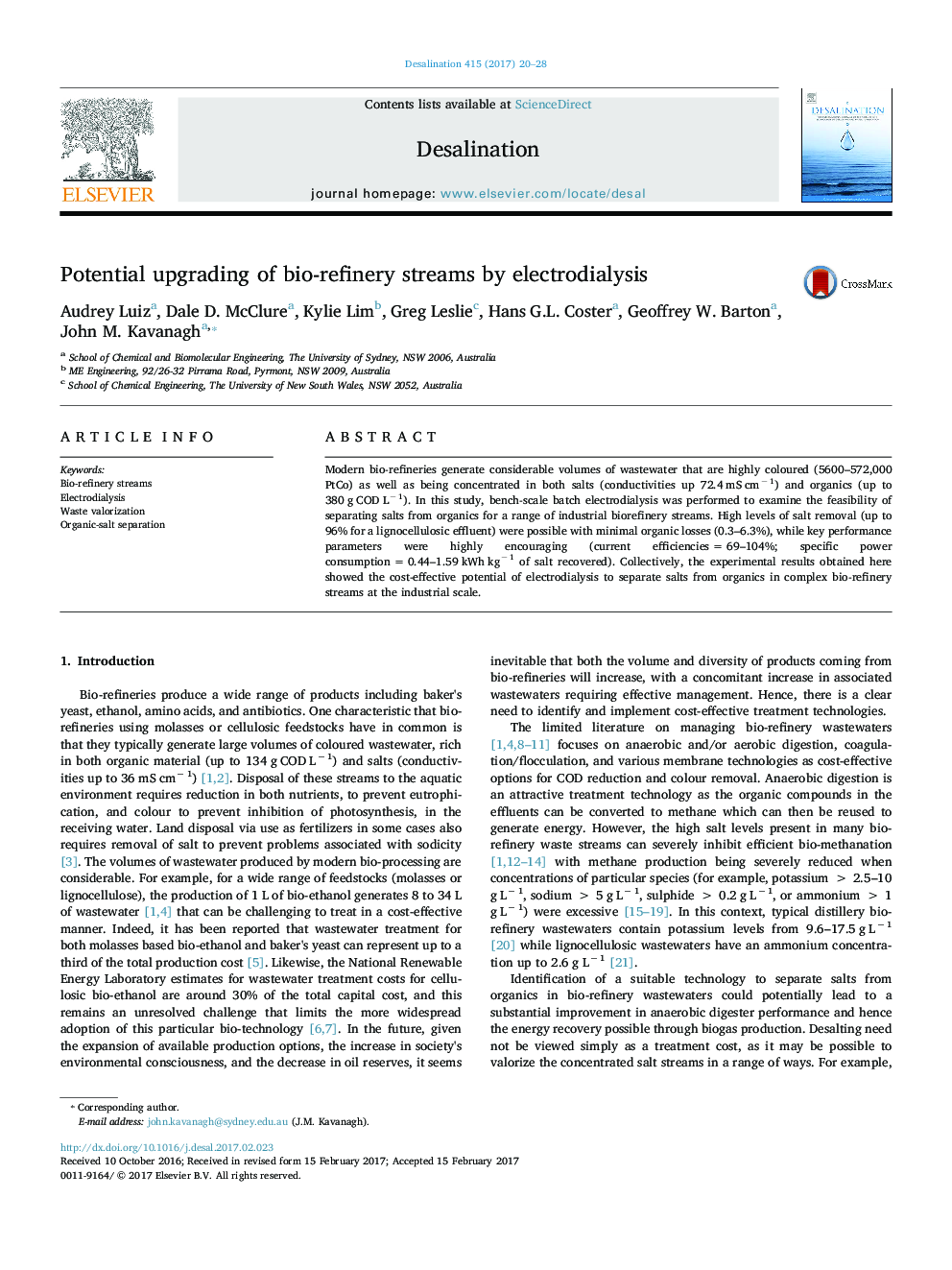| Article ID | Journal | Published Year | Pages | File Type |
|---|---|---|---|---|
| 4987752 | Desalination | 2017 | 9 Pages |
Abstract
Modern bio-refineries generate considerable volumes of wastewater that are highly coloured (5600-572,000 PtCo) as well as being concentrated in both salts (conductivities up 72.4 mS cmâ 1) and organics (up to 380 g COD Lâ 1). In this study, bench-scale batch electrodialysis was performed to examine the feasibility of separating salts from organics for a range of industrial biorefinery streams. High levels of salt removal (up to 96% for a lignocellulosic effluent) were possible with minimal organic losses (0.3-6.3%), while key performance parameters were highly encouraging (current efficiencies = 69-104%; specific power consumption = 0.44-1.59 kWh kgâ 1 of salt recovered). Collectively, the experimental results obtained here showed the cost-effective potential of electrodialysis to separate salts from organics in complex bio-refinery streams at the industrial scale.
Keywords
Related Topics
Physical Sciences and Engineering
Chemical Engineering
Filtration and Separation
Authors
Audrey Luiz, Dale D. McClure, Kylie Lim, Greg Leslie, Hans G.L. Coster, Geoffrey W. Barton, John M. Kavanagh,
